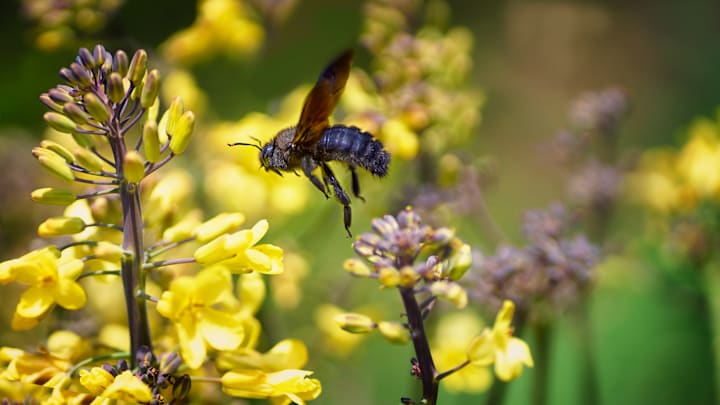You may have heard of DIY birdhouses, but you may not know that you can also create a home for bees. While bumblebees and honey bees live in communal hives, solitary bees live alone and have to make nests in whatever secluded space they can find. Although they aren’t as iconic as their social counterparts, solitary bees make up roughly 98 percent of bee species in the U.S.
Unfortunately, solitary bee populations are declining due to a combination of disease, habitat loss, pesticide use, and climate change. You can do your part to support them by following the directions below to make a bee hotel where they can lay their eggs.
The Natural History Museum in London provides excellent information on how to build a bee hotel in your backyard. You’ll need hollow canes (bamboo, common reed, or dried hollow stems from plants are some materials you can use), one plant pot, stones, and pruning shears. You can watch the full video outlining every step below.
First, stand a cane upright alongside the edge of the flower pot. Cut the cane where it extends 1 centimeter past the pot’s rim, and make sure there’s an opening for the bees to enter. Keep cutting cane segments until you have enough to pack the plant pot tightly. If you have shorter pieces left over, you can use them to fill in any gaps in the nest.
Once the nest is complete, pick a spot to set up the hotel. According to the museum’s website, bees like warmth, so placing their new abode where it will get direct sunlight is best. When you’ve picked the best spot, start making the base for the nesting area. Just assemble the stones in a pile and lay the pot on top of them on its side. The bottom should be lifted in the air with the canes pointing downward; this allows rainfall to escape so that the bees won’t drown. You may see different bee species visiting the sanctuary as the seasons change.
You can’t expect your hotel to flourish if you abandon it. Diseases can appear, and cells may go unused if you don’t maintain the living space. Luckily, this isn’t too difficult—you’ll just need to replace the old canes each year.
Read More About Bees:
